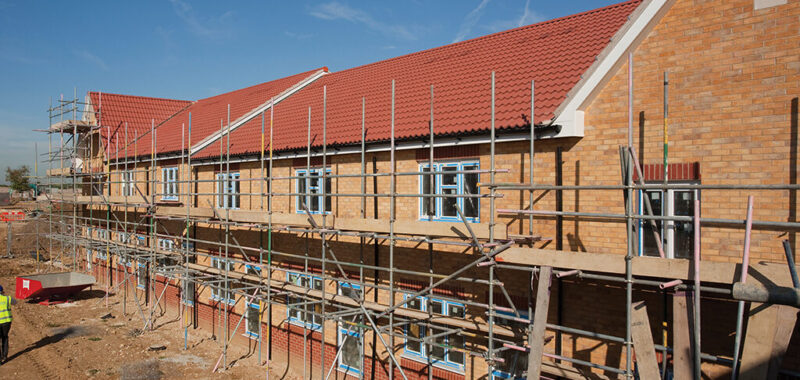The Liberal Democrats have reiterated a commitment to build 380,000 new homes per year in the UK if they are elected to power after the 4 July general election.
Their 117-page manifesto also promises to review last October’s decision by the Conservative government to cancel phase two of the HS2 high-speed rail programme.
The homebuilding target has been party policy since members voted for it at their 2021 party conference.
There is no indication in the manifesto on whether the 380,000 new homes would be built annually over the duration of the next parliament, or further beyond.
But the manifesto does commit to building 10 new garden cities and 150,000 social housing dwellings as part of the broader target.
The Lib Dems would encourage the development of existing brownfield sites with unspecified financial incentives.
In terms of transport, they would deliver Northern Powerhouse Rail while also revisiting the cancellation of HS2’s northern leg “to see if it can still be delivered in a way that provides value for money, including by encouraging private investment, or if an alternative is viable”.
Snapshot of other Lib Dem policies
- Put the construction sector “on a sustainable footing” by investing in skills, training and “new technologies such as modern methods of construction”.
- Invest in more apprenticeships and “new Lifelong Skills Grants”.
- Invest in renewable power so that 90 per cent of the UK’s electricity is generated from renewables by 2030.
- Build more electricity interconnectors between the UK and other countries.
- Compel large businesses to publish nature-related financial disclosures and transition plans “to become nature-positive across their activities and supply chains”.
- Require all new homes and non-domestic buildings to be built to a zero-carbon standard.
- Expand the British Business Bank “to ensure that viable small and medium-sized businesses have access to capital”.
Colin Brown, head of planning and development at consultancy Carter Jonas, said that many Lib Dem policies “reflect those of some of the other parties”.
He added: “What differs most from the current situation is the commitment to 380,000 new homes per annum, which is over 25 per cent higher than the current government target [of 300,000]. The manifesto says that this will be done by delivering 10 new garden villages, but they do not say where these will be or how they will ensure they are delivered in a timely fashion.”
Lawrence Turner, a director at consultancy Boyer, described the 380,000-home target as “staggering” but warned there are three major obstacles in its way.
For instance, he said that community opposition with “defensive behaviour such as ‘nimbyism’” is likely to be a major hurdle to an ambitious homebuilding programme, even if promoting brownfield development “is a step in the right direction” from the Liberal Democrats.
But the policy could also be undermined by structural issues with the sluggish and “localised” planning system and decision-making process, Turner added.
He also said that the construction sector “faces limitations in capacity and supply chain”.
He added: “Delivering 380,000 homes annually would require a significant scaling up of construction activities, which may strain the existing resources and expertise within the sector.
“The shortage of skilled labour, materials and infrastructure could pose a significant obstacle to achieving this target.”
The scale of the housing challenge facing a new government was laid bare by new figures from the Home Builders Federation (HBF) and Glenigan, covering the 12 months to March 2024.
Their research showed the lowest number of planning permissions for new homes and sites since the HBF began collecting the data in 2006.
“Amidst a deepening housing crisis and with housebuilding levels already falling sharply, these numbers present a bleak picture for future housing supply,” said HBF executive chairman Stewart Baseley.
“The report also puts into stark perspective the challenges a new government faces to meet its housing ambitions with a pipeline smaller even than during 2009 and the depths of recession.”

